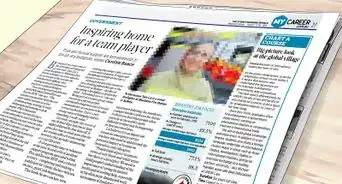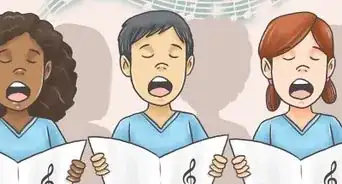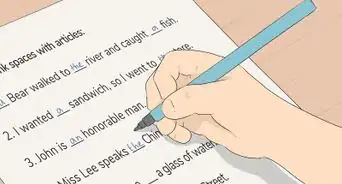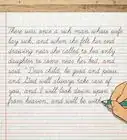This article was co-authored by wikiHow Staff. Our trained team of editors and researchers validate articles for accuracy and comprehensiveness. wikiHow's Content Management Team carefully monitors the work from our editorial staff to ensure that each article is backed by trusted research and meets our high quality standards.
There are 15 references cited in this article, which can be found at the bottom of the page.
This article has been viewed 27,382 times.
Learn more...
Adult learners bring their own set of needs to the table. The amount of knowledge adult learners start out with can vary widely. It's important to assess what your students know, so you can figure out where to begin. Try working on the alphabet and sounds first, then help them pull those together into words. After that, you can build up towards fluency and comprehension.
Steps
Making an Initial Phoneme Assessment
-
1Assess what the reader knows. Start by figuring what letter sounds, or phonemes, the person already knows. That way, you can help fill in where they need help without rehashing what they do know.[1]
- Most curriculums have an assessment you can do with students. However, if you need to make your own, make it based on the 6 phoneme tasks.
-
2Ask questions about phoneme isolation. Phoneme isolation is the ability to identify sounds in words. For instance, you might ask, "What is the first sound in 'finish'?" or "What is the last sound in 'past'?"[2]Advertisement
-
3Figure out what the student knows about phoneme categorization. Phoneme categorization is the ability to pick out the sounds that don't belong. For instance, you might ask, "Which word has a different vowel sound: bat, bag, or babe?"[3]
-
4Discuss phoneme identity. In this task, the student must find the same sound in different words. For example, you might ask, "What is the common sound in 'paper,' 'pitch,' and 'pipe'?"[4]
-
5Ask about phoneme blending. Phoneme blending requires students to join separate sounds together. You could say, "what word do these sounds spell? /s/ /k/ /u/ /p/ (scoop)?"[5]
-
6Assess the student's phoneme segmentation. Here, you see whether students can pull the sounds out of a word. It's the opposite of blending. You could ask, "How many phonemes are there in 'scoop'?" (/s/ /k/ /u/ /p/)[6]
-
7Discuss phoneme deletion. In this task, you ask students to delete a sound from a word and see what is leftover. You might ask, "How would you say 'scoop' without the /s/ sound?"[7]
Working on the Alphabet and Phonemes
-
1Introduce sounds individually. Go through all the phonemes, using listening activities. For instance, you could use the phoneme /f/ which is the "F" sound in the English language. Start by saying the sound several times while holding up a card with /f/ on it. Then, using flash cards, show the students words that begin with /f/ as you say them slowly, such as "fine," "fall," "fast," and "furry."[8]
- You can also use words that make that sound with different letters, such as "phone."[9]
-
2Differentiate between each individual sound and others. Walk around the room and point to different objects. If it has the /f/ sound, for instance, hold up the card and say the word. If it doesn't have the sound, don't hold up the card.[10]
-
3Reinforce each sound with a short quiz. Have the person number a paper 1 through 10 if they are able. Say a word out loud for each number. On the words that have an /f/ sound, for instance, the student should mark an "f" by it.[11]
Moving from Phonemes to Words
-
1Work on phoneme blending. Give examples of how sounds blend together to form words, such as /k/ /a/ /sh coming together to form cash. Say each sound, then slowly enunciate the word, so the students see how the word comes together.[12]
- Once you've given examples, give the students sounds, and have them try to sound out the word for you.
-
2Play around with other phoneme tasks. Work through other phoneme tasks, such as phoneme deletion and phoneme segmentation. Provide examples of each task, and then ask the students to give you answers.[13]
- For instance, show students how removing the /s/ /p/ from "splash" forms "lash."
- You could also show students how "hat" can be broken into /h/ /a/ /t/.
-
3Help with non-decodable words. Non-decodable words are ones that don't follow the rules of phonetics, such as "who." English has borrowed words from many languages, which is why many words don't follow "the rules." As the adults are trying to sound out words, help them figure out the ones that can't be decoded by saying it for them. Mostly, these words just need to be memorized.
-
4Work on spelling. Say a word out loud, one that is phonetically regular and follows the rules you've gone over already. Have the students put down a poker chip for each sound in the word, then go back and put a different-colored chip over each spot where a vowel sound is. Then, have the students write down the corresponding letter for each sound.[14]
-
5Use a children's book. Using children's books with adults is a bit controversial, as some feel like it can be demoralizing or condescending for adults. However, children's books can take adults back to when they were first trying to read, which can be helpful.[15] Plus, children's books often include rhyming and alliteration, which helps any beginning reader learn the phonetics of reading.[16]
- Try reading these aloud to your students. If you feel like it might be condescending, try breaking the ice with a little joke, like "Well, we all know Humpty-Dumpty had a great fall, but now we get to read about it! Extra, extra!"
Developing Fluency
-
1Have the student(s) read a passage. Begin with a passage the students can read at least some of. Have each student read the passage out loud. As they do, provide feedback on words and anything else they need help with.[17]
- Start with very basic passages. Look for passages for beginning learners.
-
2Read the passage aloud. Have your students listen to you read the passage aloud, while following along with the text. This helps the students hear how it's supposed to sound.[18]
-
3Encourage the students to re-read the passage. Re-reading passages is the main way to learn fluency. Have each student re-read the passage aloud several times, while you provide feedback.[19]
Working on Vocabulary and Comprehension
-
1Introduce new words to the students each lesson. Spend 10 to 15 minutes each lesson working on vocabulary. Bring out 6 to 10 new words, and give them a definition. Talk about the meaning of each word, and use it in a sentence. Ask different students to use the word in a sentence.[20]
-
2Ask students to look up words as they're reading. One easy way to build vocabulary is to be exposed to new words in texts. As students are reading at home, they'll come across words they don't know. Tell the student to try to figure out what it means first by looking at the sentence. Then, ask the student to look it up to learn the meaning.[21]
-
3Try vocabulary games. Vocabulary games can help students build up their word knowledge without as much pressure. You can even use common games like Pictionary, Scategories, and charades to help students work on their vocabulary.[22]
- You can also try a game like chalkboard anagram. Write a word on the board, and then have students come up and write a word for each letter. Ask them to pick a word related to the anagram.
- For instance, if you write "COMPUTER," students could write "Crash," "Order," "Mouse," "Pictures," "User," "Technology," "Email," and "Reboot."
-
4Ask students to paraphrase. As you read together or as they read at home, have the students put what they read in their own words. You can help them along by asking them questions, which can give them hints about what they should be focusing on.[23]
- For instance, you could ask students to paraphrase this passage: "The cat longed to go outside. The cat waited for its chance. It stood by the door and watched for it to open. The humans finally opened it, and the cat ran out when they weren't looking. The cat visited the neighbors, chased a mouse, and found a warm sun spot to nap. When it got dark, the cat decided to go home because he wanted his dinner."
- The student might say, "The cat wanted to go outside, so he did. He had an adventure and then came home when he was hungry."
-
5Encourage students to draw what they hear. Another way to help students comprehend what they're hearing is to draw a picture as you read. Creating a visual image can assist students in synthesizing information, as it requires them to listen, hear, and reproduce the text in some form.[24]
- If students have trouble with this task, start by helping them study pictures that are already with the text. You can also talk about what you see when you read the text.
-
6Create summaries by highlighting main ideas. Have students read a passage. As they do, ask them to highlight or underline what they see as the main ideas or thoughts of the passage. When they're done have them pull it together in a summary.
Resources for Teaching Adults to Read
References
- ↑ https://lincs.ed.gov/publications/pdf/teach_adults.pdf
- ↑ https://lincs.ed.gov/publications/pdf/teach_adults.pdf
- ↑ https://lincs.ed.gov/publications/pdf/teach_adults.pdf
- ↑ https://lincs.ed.gov/publications/pdf/teach_adults.pdf
- ↑ https://lincs.ed.gov/publications/pdf/teach_adults.pdf
- ↑ https://lincs.ed.gov/publications/pdf/teach_adults.pdf
- ↑ https://lincs.ed.gov/publications/pdf/teach_adults.pdf
- ↑ https://lincs.ed.gov/publications/html/mcshane/chapter4.html
- ↑ http://www.englishlanguageclub.co.uk/f-sound/
- ↑ https://lincs.ed.gov/publications/html/mcshane/chapter4.html
- ↑ http://www.englishlanguageclub.co.uk/f-sound/
- ↑ http://www.ncsall.net/index.php@id=280.html
- ↑ https://lincs.ed.gov/publications/pdf/teach_adults.pdf
- ↑ http://www.ncsall.net/index.php@id=280.html
- ↑ https://www.pbslearningmedia.org/resource/ristrat.pd.reading.choosetexts/choosing-texts/?#.WjS4rzdG3IU
- ↑ http://ici-bostonready-pd-2009-2010.wikispaces.umb.edu/file/view/Phonemic+Awareness+Moving+From+Oral+Language+to+print.pdf
- ↑ https://lincs.ed.gov/publications/pdf/teach_adults.pdf
- ↑ https://lincs.ed.gov/publications/pdf/teach_adults.pdf
- ↑ https://lincs.ed.gov/publications/pdf/teach_adults.pdf
- ↑ https://abspd.appstate.edu/vocabulary-lessons
- ↑ https://lincs.ed.gov/publications/pdf/teach_adults.pdf
- ↑ https://abspd.appstate.edu/vocabulary-lessons
- ↑ https://lincs.ed.gov/professional-development/resource-collections/profile-435
- ↑ https://www.ncbi.nlm.nih.gov/pmc/articles/PMC3474365/pdf/nihms-335830.pdf
- ↑ http://busyteacher.org/3643-teaching-adults.html
About This Article
To teach adults to read, introduce sounds individually by holding up a card with a letter on it, such as "F," and saying the sound several times Then, show the student words that begin with the “F” sound, such as “fine,” “fun,” and “fast.” Additionally, point to different objects and hold up the “F” card if it starts with that sound. Once the student masters a sound, work on how they blend together to form words. For example, say each sound in the word "fun," then show how they come together to form a word. To learn how to use children’s books when helping adults learn how to read, keep reading!

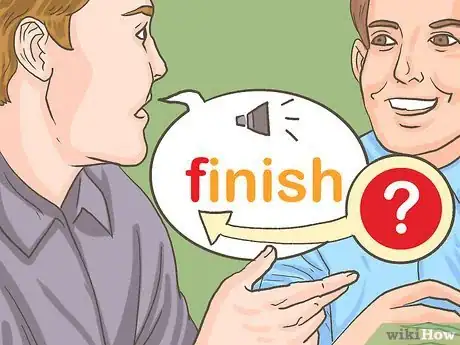









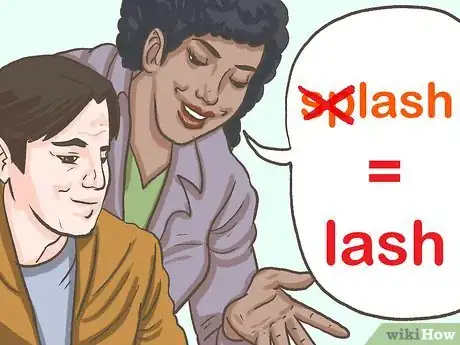



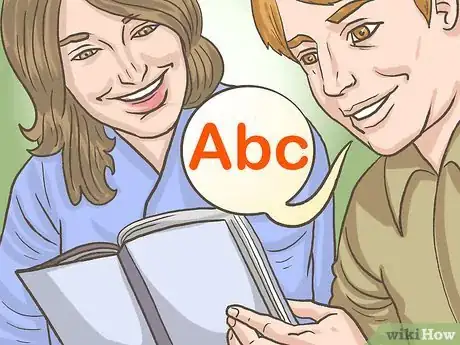
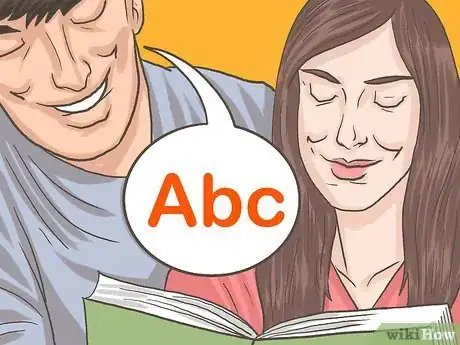

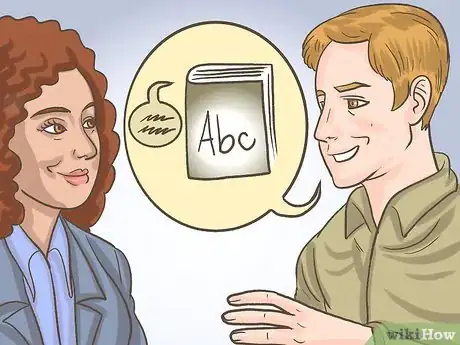

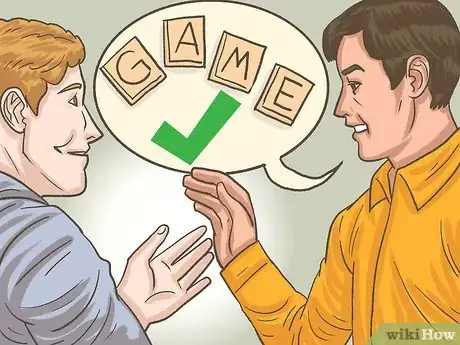
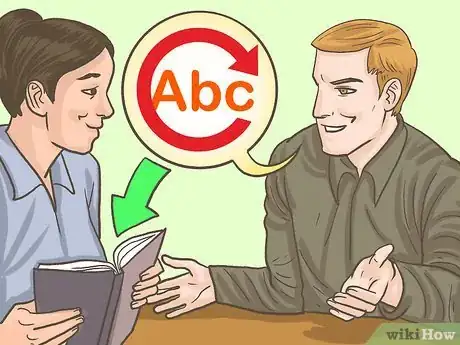

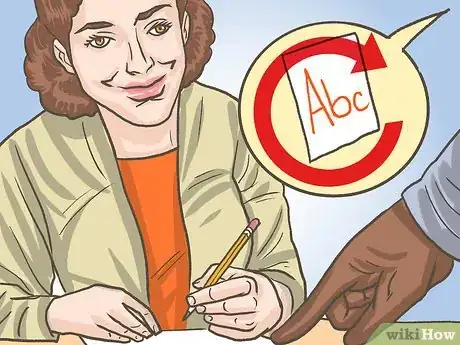



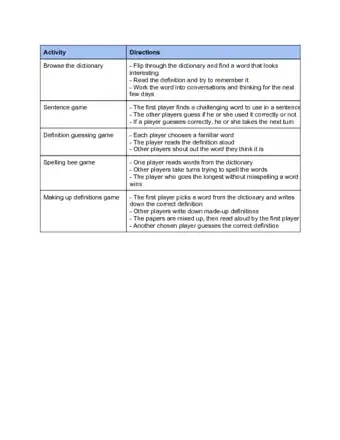





-Step-15.webp)


